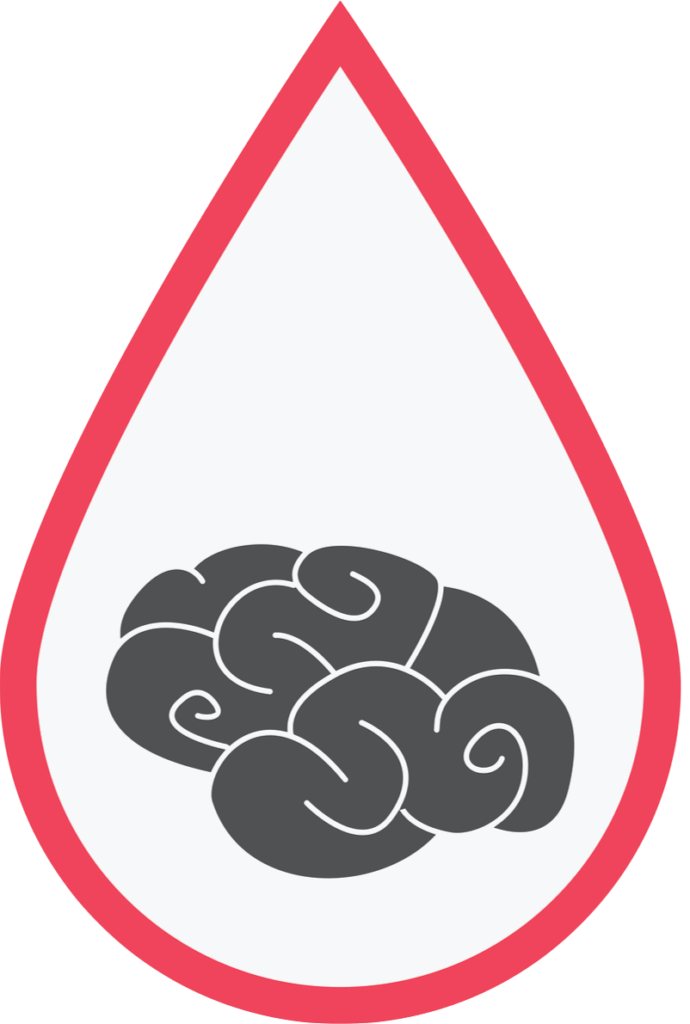A traumatic brain injury transforms an everyday accident into a life-changing experience. When the initial brain trauma is severe enough to cause bleeding in the brain, the residual effects often force a person to rework their entire life. Ongoing physical challenges, altered relationships, and lifelong impairments often become a part of the injured person’s new normal. An experienced brain injury attorney can help assist with making the transition after a brain injury.
Severe TBIs are often a factor when a person dies in an auto crash. Mild, moderate and severe brain injuries also occur due to falls from elevated work surfaces and violent assaults. They happen during slip and fall accidents, bicycling mishaps, organized sporting events, and during recreational and playground activities. These events occur in privately-owned residences, commercial spaces, recreational areas, and in the workplace.
Often they occur when someone’s negligent act forces a person to endure an ordeal that’s capable of causing one of three types of injuries.
- Closed head wound: Damage that occurs when a sudden jolt twists, shakes or slams the brain within the skull.
- Open head wound/Pentrating Injury: A foreign object or bone fragments physically pierces or fractures the skull/dura and enters the brain.
- Crushing injury: A force compresses a portion of the skull or brain stem.
Non-Sports-Related Brain Injuries Affect Everyone
In recent years, controversies surrounding sports-related Chronic Traumatic Encephalopathy generated public brain injury awareness. As CTE and traumatic brain injuries are inextricably connected, the sports-related injury also drew attention to TBIs and how they affect a healthy brain.

The media’s focus on sports-related concussions had a positive effect. Parents became aware of sports and brain injury dangers. Physicians decided to rethink the youth player medical approval process. California and other states implemented concussion protocol statutes to help keep young athletes safe. The Centers for Disease Control and Prevention developed Head’s Up concussion guidelines. These became the foundation for youth sports organizations’ concussion safety programs nationwide.
Professional and amateur athletes aren’t the only people at risk for brain injuries. You’re unlikely to hear a news anchor discuss non-sports-related brain injuries, but physicians confirm TBI diagnoses far more frequently in recent years. The CDC’s most recent nationwide TBI-related injury statistics tracked 2.7 million ER visits, 288,000 hospitalizations, and 56,800 fatalities in a single year. Of those hospitalized, 23,000 were children and 2,529 children were among those who sustained fatal TBI injuries.
TBIs Affect Everyone
When a person sustains a TBI, their functional losses also affect their families’ finances and quality of life. In some cases, taxpayers foot the bill for a TBI patient’s medical treatment, rehabilitation, long term care costs, and special education programs.
Unfortunately, non-sports related brain injuries occur so frequently, they often seem ordinary. Perhaps that’s because they’re so common. The traumatic brain injuries that don’t make the news are usually the result of circumstances, accident patterns, and negligence issues that haven’t changed much over the years:
- Traumatic brain injuries happen when a person’s head receives a blow or a bump. (falls, auto accidents, playground incidents)
- TBIs occur when an object pierces the skull and enters the brain. (gunshot wounds, severe auto accidents)
- They occur when a person endures a force powerful enough to shake their body and cause the brain to collide with the interior skull. (shaken baby syndrome, sporting events, auto accidents)
- TBI-related death rates are highest in seniors age 75 and older. (falls at home or in public places)
- Young children have the highest rates of TBI emergency room visits.
- TBIs cause developmental and learning problems for young patients.
- With proper precautions and attention to safety, brain injuries are usually preventable.
Bleeding in the Brain
Moderate to severe brain injuries often involve brain bleeding. Uncontrolled bleeding is one of the primary reasons why a TBI patient develops chronic physical conditions and disabilities. As physicians often communicate using formal, less-shocking medical jargon, they might never explain that a brain is bleeding. They usually refer to a brain bleed as a hemorrhage.
The Cleveland Clinic website describes brain bleeding and hemorrhage using simple, detailed descriptions.
- Intracranial hemorrhage: Bleeding inside an injured person’s skull
- Cerebral hemorrhage: Bleeding around or within the brain
- Hemorrhagic stroke: Bleeding due to a leaking or ruptured blood vessel
When the Brain Bleeds
Whether brain bleeding occurs due to a medical condition or a trauma, it’s usually a sudden, unexpected event. Strokes occur when the brain bleeds due to internal issues. External trauma such as auto accidents and falls also cause brain bleeding. When the brain is injured and bleeding, damage occurs rapidly. Bleeding is often a sign that the external trauma is life-threatening.
Blood flow is the brain’s only source for oxygen and nutrients because it doesn’t store them. When the brain bleeds or vessels leak, it jeopardizes the blood flow to areas beyond the damaged tissues. Pooling blood increases pressure in the brain and further inhibits the brain’s oxygen supply. When bleeding disrupts the oxygen flow for three or four minutes, it affects brain cells and nerves and the injured person usually sustains functional losses. When a person is taking a prescribed blood thinner, it sometimes causes bleeding in the brain. Thinners also cause problems in stopping trauma-induced bleeding.
Symptoms of Brain Bleed
When a closed head trauma causes a brain bleed, often, you won’t see visible external signs. Each injured brain responds differently to external trauma. When you hit your head during an accident or someone strikes you, your brain reacts to the injury by manifesting a range of symptoms. Some occur immediately while others surface minutes, hours, or even days later.
Because symptoms are often your only clue that something is wrong with your brain, it’s important to pay attention. A TBI often causes headaches, light-headedness, dizziness, fatigue, lethargy, and other symptoms which sometimes seem vague. The symptoms may resolve in weeks to months or they could last a lifetime.
 People with severe TBIs usually experience additional, more profound symptoms as well:
People with severe TBIs usually experience additional, more profound symptoms as well:
- Weakness, numbness, tingling
- One-sided facial, limb, or extremity paralysis
- Severe, sudden and worsening headache
- convulsions or seizures
- Swallowing difficulty
- Vision and pupil dilation
- Speaking and comprehension difficulties
- Loss of balance and coordination
- Slurred speech
- Altered consciousness, coma
Managing Traumatic Brain Injury Complications
People with traumatic brain injuries often suffer from a wide range of symptoms and issues. Those with the most severe injuries sometimes die immediately following an accident or car crash. Others remain comatose for extended periods.
During the initial emergency treatment, medical professionals usually view brain damage using a Cranial Tomography scan (CT). This allows them to see brain swelling, bruises, and blood clots and decide on a course of treatment. Medical professionals also estimate the degree of damage severity using several additional measures:
- Loss of consciousness duration
- Depth of coma
- Degree of memory loss
- Loss of consciousness
Physicians begin treatment with the understanding that they can’t repair the damage caused by the initial trauma. Emergency treatment focuses on re-establishing and maintaining the brain’s blood flow and preventing additional damage. Diagnostic testing allows physicians to determine the best treatment course. The National Institute of Neurological Disorders and Stroke explains that half of the patients with severe TBIs require surgical removal of ruptured blood vessels and bruised brain tissue.
Consciousness Issues
When a person sustains a brain injury, they sometimes experience consciousness issues. These often include brief periods of confusion or disorientation.
The Model Knowledge Translation Center reports that 20 to 40 percent of the patients with severe brain injuries don’t survive. Those who live often experience extended consciousness issues, such as a coma or a vegetative state. During these periods, they recover gradually but have no self-awareness.
Coma
During a coma, patients don’t open their eyes and can’t speak or communicate with their hands or bodies. A comatose patient can’t follow instructions and usually experiences no movement. As they recover, they often transition to a vegetative state before regaining full consciousness.
Vegetative State
When a patient is in a vegetative state, they remain unconscious but engage in limited interaction. Vegetative patients experience sleep-wake cycles. They open their eyes, make sounds, and sometimes react to noises. While in this state, patients don’t usually communicate, follow instructions, or move purposefully.
Comatose and Vegetative patients require special care. They receive nourishment through feeding tubes. They require special bedding and constant repositioning to prevent pressure sores. Unconscious patients require assistance with breathing, bowel and bladder elimination, and other personal care. The medical staff must also take steps to minimize infections, fevers, and other reactions.
When a brain injury is serious enough to cause a coma or vegetative state, the injured person doesn’t usually survive. If a patient survives a month or more, they usually live but endure slow difficult recoveries.
Focusing on Recovery
Patients who survive moderate to severe TBIs must make a concerted recovery effort. Even then, they must make life adjustments once they complete recovery and rehabilitation. The National Institute on Disability, Independent Living, and Rehabilitation Research calls moderate to severe TBI a “lifelong condition.“ Often, TBI patients must change even the simplest routines to cope with everyday life.
Rehabilitation usually begins before a TBI patient terminates their in-patient hospital stay. Before they return to their previous living situations, they must learn new ways to accomplish basic household and personal tasks. In-patient rehabilitation for TBI patients focuses on several basic recovery categories:
- Thinking issues: Memory, language, judgment, concentration
- Physical issues: Strength, movement, other physical skills
- Sensory problems: Adjustments to vision, hearing, and sensation changes
- Emotional problems: Dealing with mood, impulse, and irritability challenges
Recovering TBI patients must find new ways to relate to their spouses and families. As some return home with profound disabilities, they endure challenges managing previously held household and parental responsibilities. They often have difficulty adjusting to personal and spousal relationships. While some patients find ways to return to their previous occupations, others must undergo vocational rehabilitation and learn new skills to return to the job market.
Inconsistent Recovery Experiences
Despite consistent recovery efforts, not all TBI patients encounter the same recovery successes. After recovery and rehabilitation, some still have decreased life expectancies, continuing poor health, and ongoing functionality limitations. Others suffer from a reduction in their overall quality of life.
NIDILLR research shows that TBI patients’ five-year outcomes vary.
- 26 percent improved
- 22 percent stayed the same
- 22 percent died
- 33 percent endured worsening health
A TBI patient’s return to normalcy is usually contingent upon their personal circumstances. The NIDILRR determined that recoveries are particularly difficult for older men, unemployed and unmarried people, and people with limited education. Those who sustain the most severe TBIs and people who have fall-related brain injuries also encounter recovery difficulties.
Research also documents these and other health trends among recovering patients with moderate to severe TBIs:
- 57 percent become moderately or severely disabled.
- 55 percent remain unemployed even if they had jobs before their injuries.
- 33 percent require personal assistance with tasks.
- 29 percent abuse drugs or alcohol.
A Brain Injury Attorney Can Help
If you or a loved one have sustained a moderate to severe brain injury, the right lawyer helps you protect your legal rights. It’s important to connect with a legal representative who understands the complex liability and injury issues. You may need a brain injury attorney who is willing to put in the work to recover damages to help you care for your family.
An initial legal consultation is an informal meeting. You sit down with an attorney to talk about what happened and the attorney explains your legal options. You make no commitment, and it’s up to you if you want to move forward with your case.







